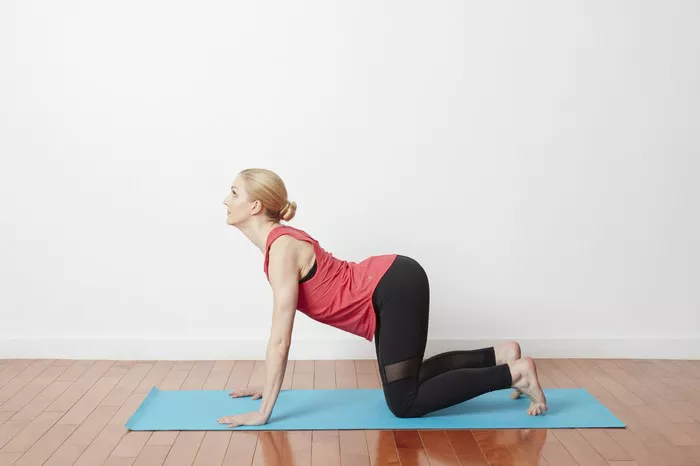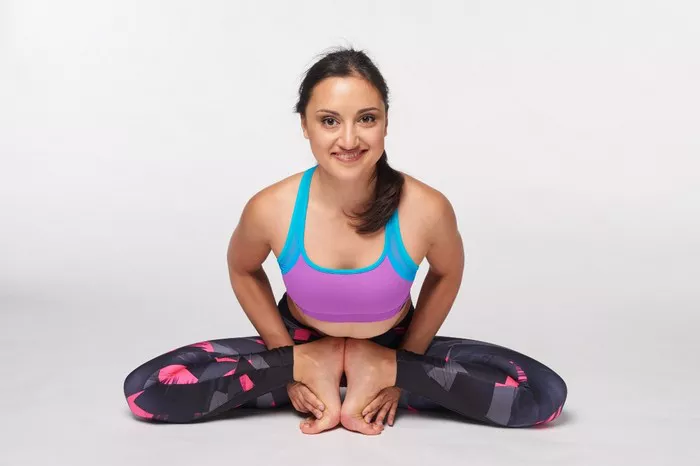Pregnancy is a delicate phase in a woman’s life that calls for careful attention to physical activity. Prenatal yoga, with its gentle movements and focus on breathing, is a popular choice for expectant mothers seeking to stay fit and relaxed during this transformative time. However, safety is paramount when practicing yoga during pregnancy to avoid any potential risks to both mother and baby. In this guide, we will delve into safe prenatal yoga poses, providing precise instructions and insights to help expectant mothers navigate their practice with confidence and peace of mind.
1. Mountain Pose (Tadasana)
Description: Stand tall with feet hip-width apart, arms relaxed by your sides, and palms facing forward.
Safety Tips:
- Distribute weight evenly on both feet to maintain balance and stability.
- Engage the core muscles gently to support the lower back.
- Avoid locking the knees; keep them soft to prevent strain on the joints.
2. Cat-Cow Stretch (Marjaryasana-Bitilasana)
Description: Start on your hands and knees in a tabletop position. Inhale, arch your back, and lift your gaze (Cow Pose). Exhale, round your spine, and tuck your chin to your chest (Cat Pose).
Safety Tips:
- Move slowly and mindfully, syncing each movement with your breath.
- Avoid over-arching or compressing the spine; maintain a gentle stretch.
- Support your wrists by placing a folded blanket underneath if needed.
3. Warrior II Pose (Virabhadrasana II)
Description: From a standing position, step one foot back, keeping both feet facing forward. Bend the front knee, aligning it over the ankle, and extend the arms parallel to the ground, palms facing down.
Safety Tips:
- Keep the hips squared toward the front of the mat to prevent strain on the pelvis.
- Avoid overextending the front knee; maintain a comfortable bend.
- Modify by reducing the depth of the lunge if you experience any discomfort.
4. Child’s Pose (Balasana)
Description: Kneel on the mat, toes together, and knees apart. Sit back on your heels, then fold forward, extending your arms in front of you and resting your forehead on the mat.
Safety Tips:
- Place a bolster or folded blanket under the hips for added support and elevation.
- Allow the belly to rest comfortably between the thighs, avoiding compression.
- Modify by widening the knees if necessary to accommodate the growing belly.
5. Modified Triangle Pose (Trikonasana Variation)
Description: Stand with feet wide apart, toes pointing forward. Extend one arm down toward the shin or a block while reaching the opposite arm up toward the ceiling, creating a straight line from fingertips to fingertips.
Safety Tips:
- Keep the pelvis neutral and avoid excessive twisting through the torso.
- Use a block under the bottom hand for support if reaching to the floor feels challenging.
- Engage the core muscles to support the lower back throughout the pose.
6. Supported Bridge Pose (Setu Bandhasana with Props)
Description: Lie on your back with knees bent and feet hip-width apart. Place a block or bolster under the sacrum and gently lift the hips toward the ceiling, keeping the shoulders grounded.
Safety Tips:
- Use the lowest height setting on the block or bolster to ensure stability.
- Avoid over-arching the lower back; maintain a neutral spine alignment.
- Engage the glutes and inner thighs to support the pelvis in the pose.
7. Seated Forward Bend (Paschimottanasana)
Description: Sit on the mat with legs extended in front of you. Inhale to lengthen the spine, then exhale to hinge at the hips and fold forward, reaching for the shins, ankles, or feet.
Safety Tips:
- Bend the knees slightly if you feel any pulling or discomfort in the lower back.
- Use a strap around the feet if reaching them feels challenging due to the belly.
- Focus on lengthening the spine rather than how far forward you can fold.
8. Supported Squat Pose (Malasana Variation)
Description: Stand with feet wider than hip-width apart, toes pointing outward. Lower into a squat position, using blocks or a bolster under the sit bones for support.
Safety Tips:
- Keep the knees aligned with the toes to prevent strain on the joints.
- If balance is challenging, hold onto a sturdy object like a chair or countertop.
- Engage the pelvic floor muscles to support the pelvis in the squat position.
9. Butterfly Pose (Baddha Konasana)
Description: Sit on the mat with the soles of the feet together, knees bent and dropping toward the ground. Hold onto the feet or ankles, lengthening the spine and gently pressing the knees toward the floor.
Safety Tips:
- Support the knees with blocks or cushions if they don’t comfortably reach the ground.
- Avoid forcing the knees down; allow gravity to gently open the hips over time.
- Keep the spine long and avoid rounding the back as you fold forward.
10. Corpse Pose (Savasana)
Description: Lie on your back with legs extended and arms by your sides, palms facing up. Close your eyes and focus on deep, slow breathing, allowing the body to relax completely.
Safety Tips:
- Elevate the head and chest slightly with a bolster or folded blanket if lying flat is uncomfortable.
- Use additional props such as an eye pillow or blanket for warmth and comfort.
- If lying on the back becomes uncomfortable, rest on your side with a pillow between the knees.
Conclusion
Prenatal yoga can be a beneficial practice for expectant mothers, providing physical and mental support throughout pregnancy. By incorporating safe and gentle poses into your routine, you can promote strength, flexibility, and relaxation while minimizing the risk of injury. Remember to listen to your body, modify as needed, and always consult with your healthcare provider before beginning any new exercise regimen during pregnancy. With mindfulness and proper guidance, prenatal yoga can be a rewarding journey for both you and your growing baby.




















